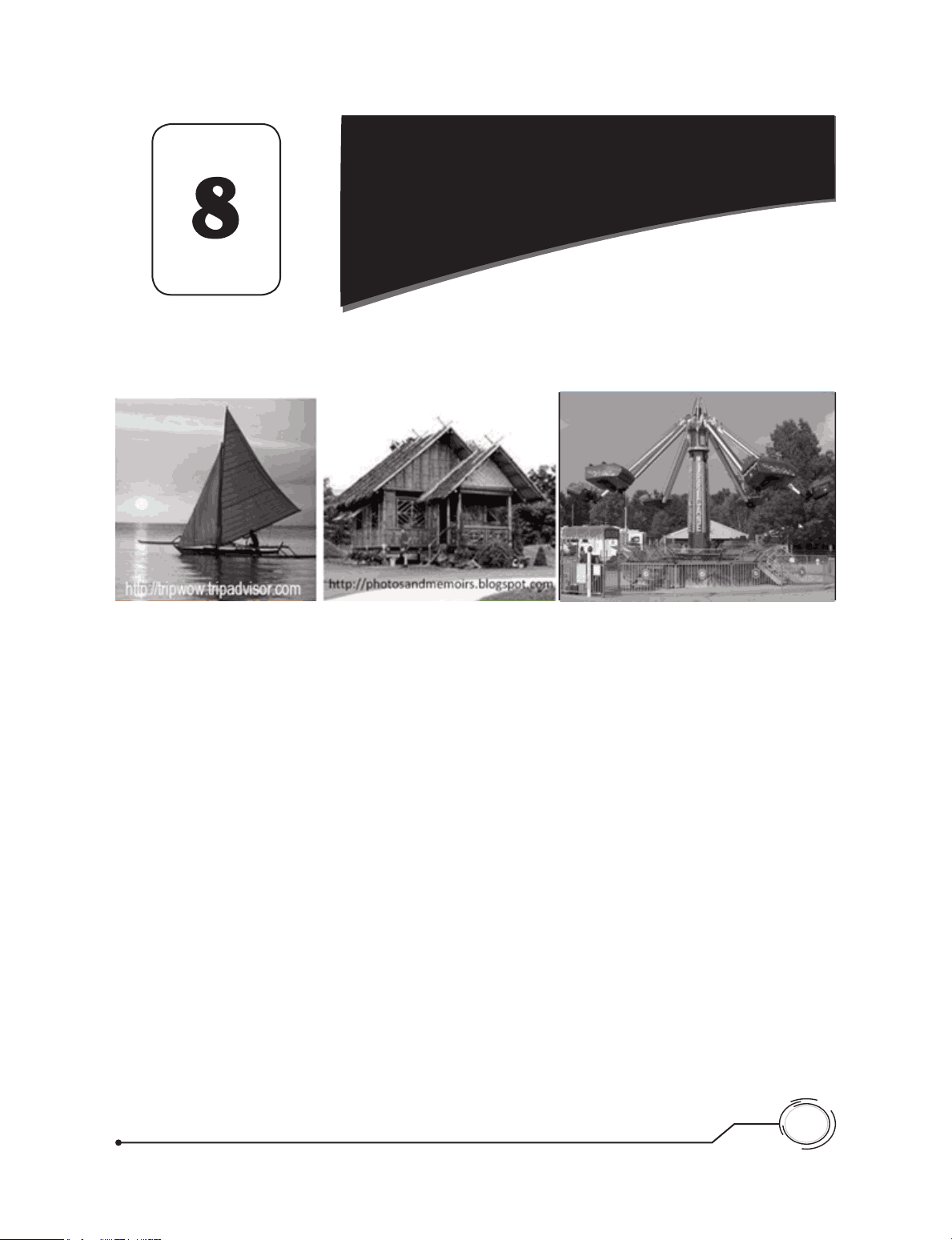
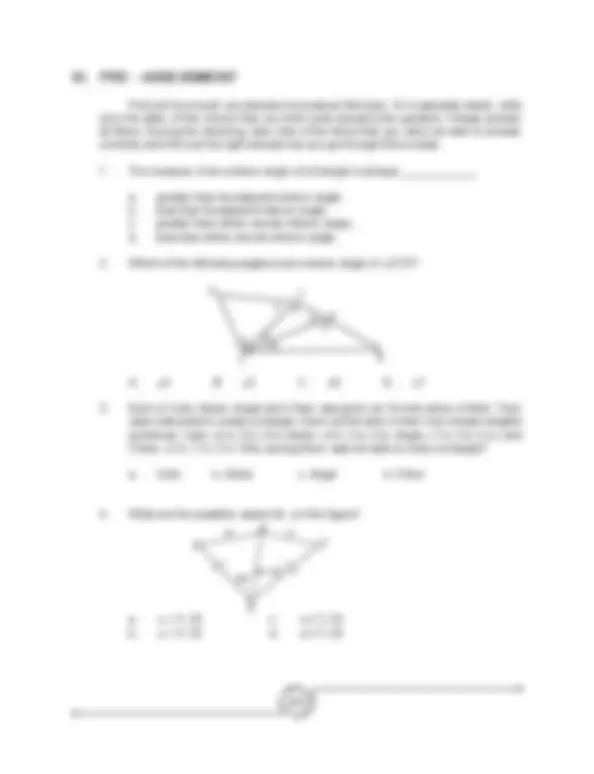
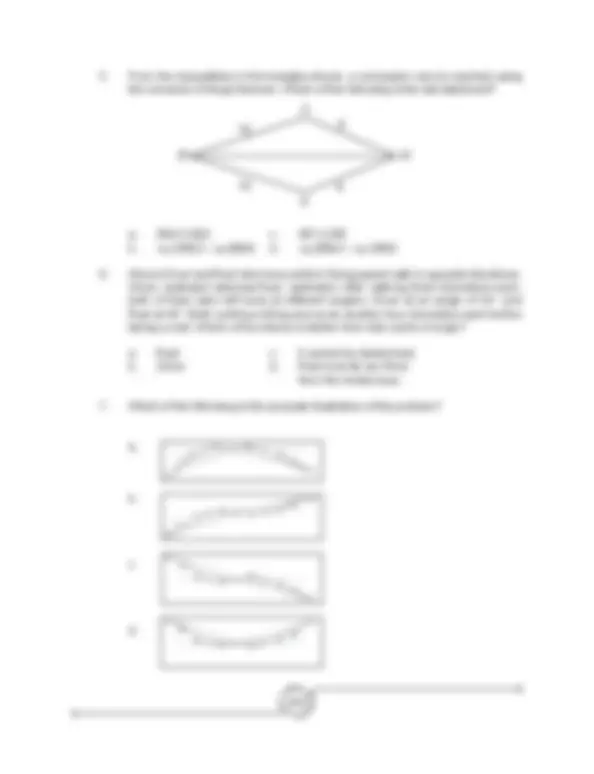
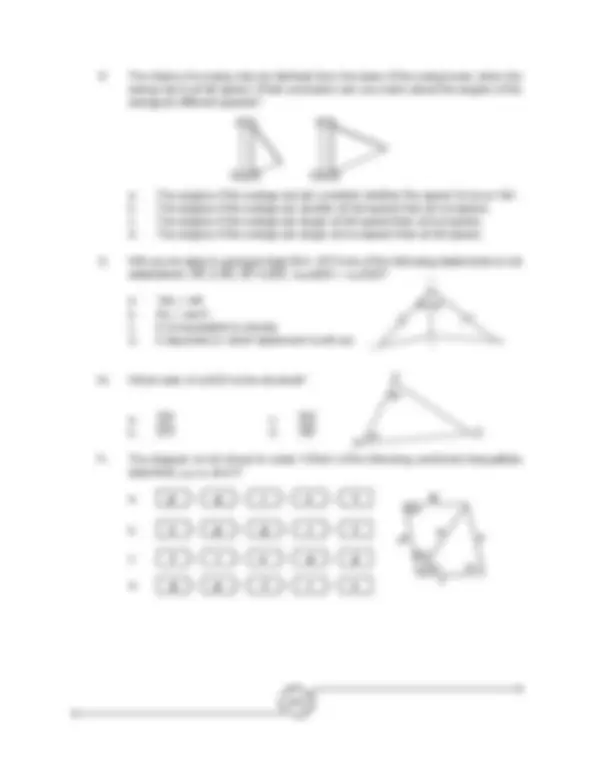
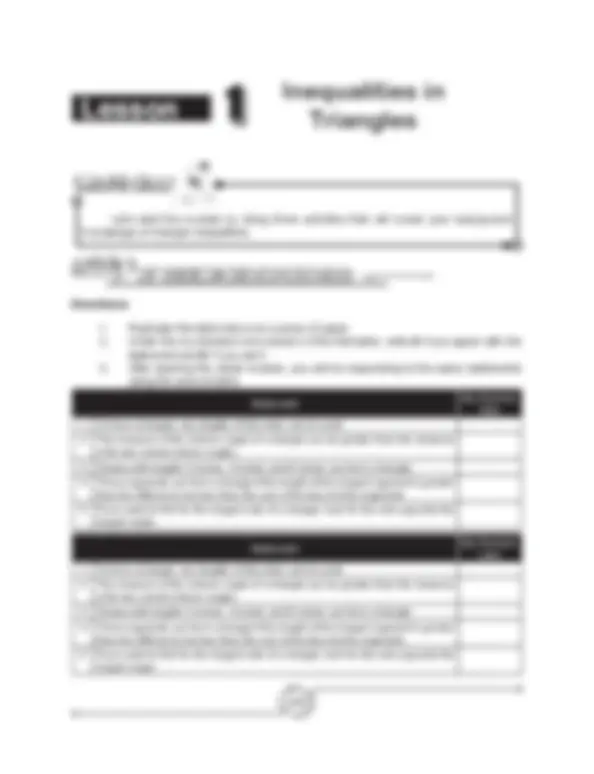
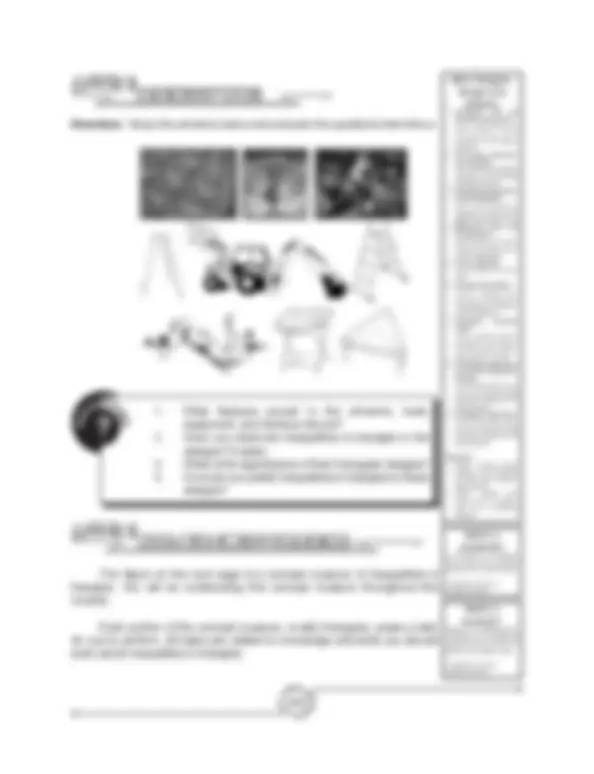
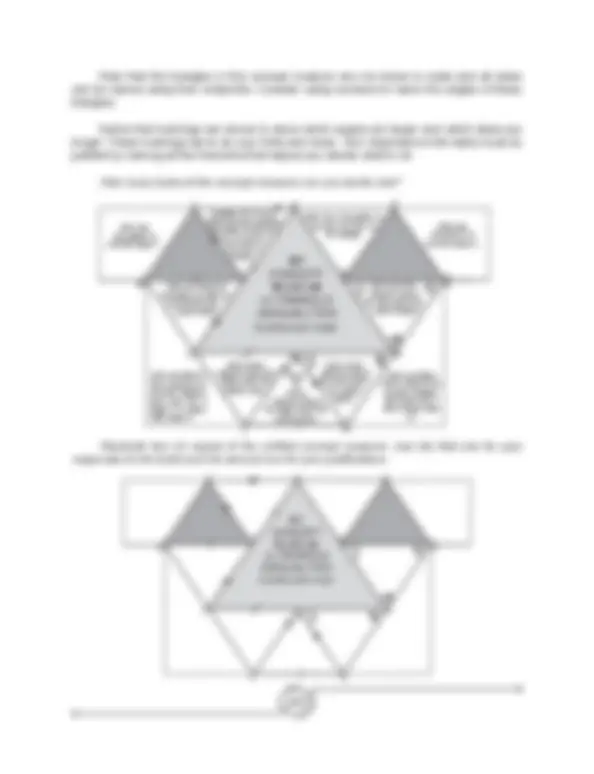
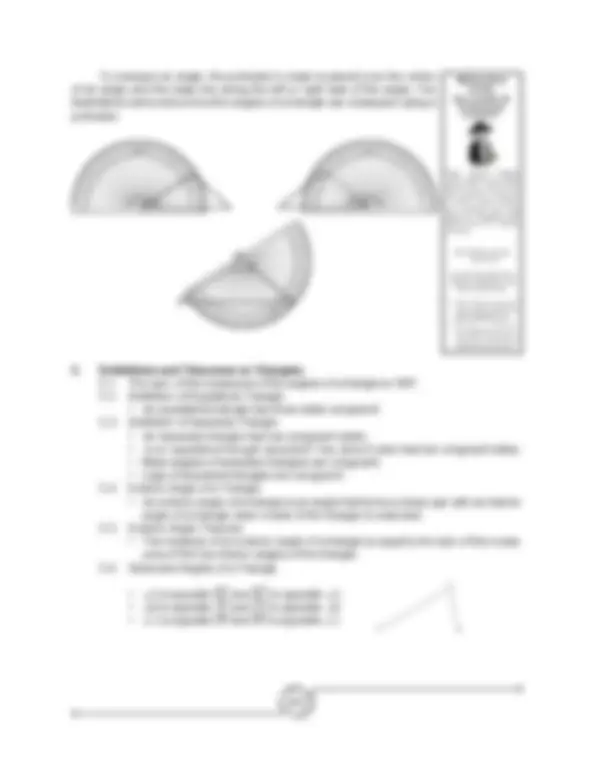
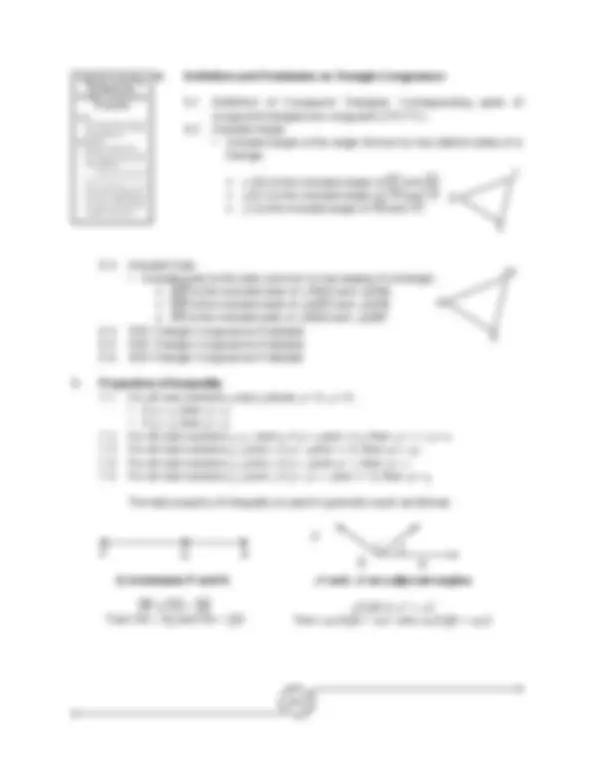
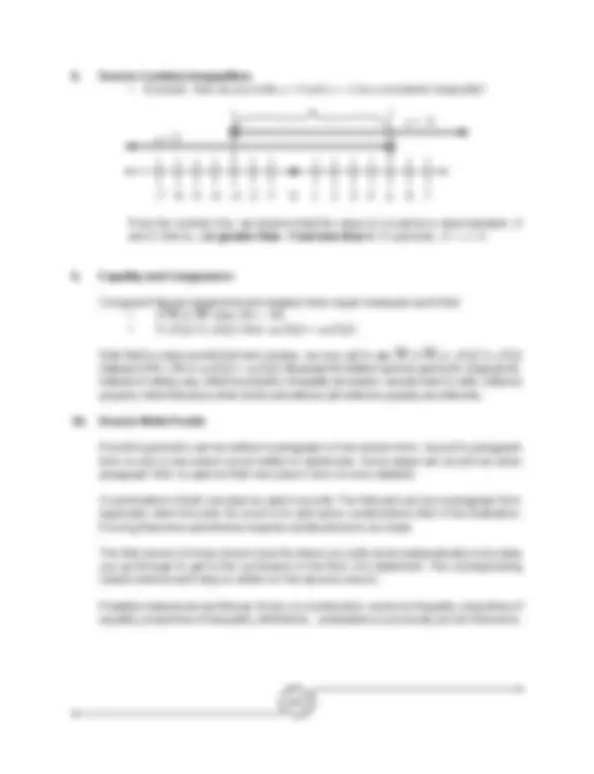
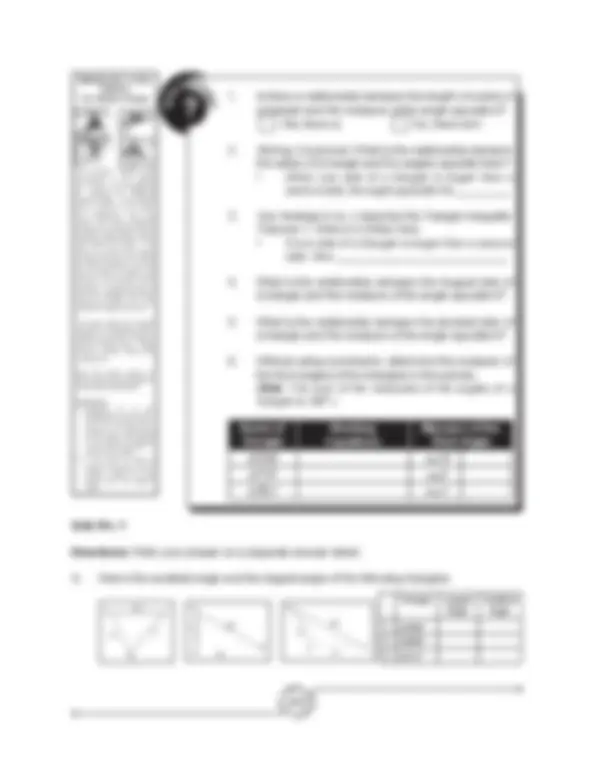
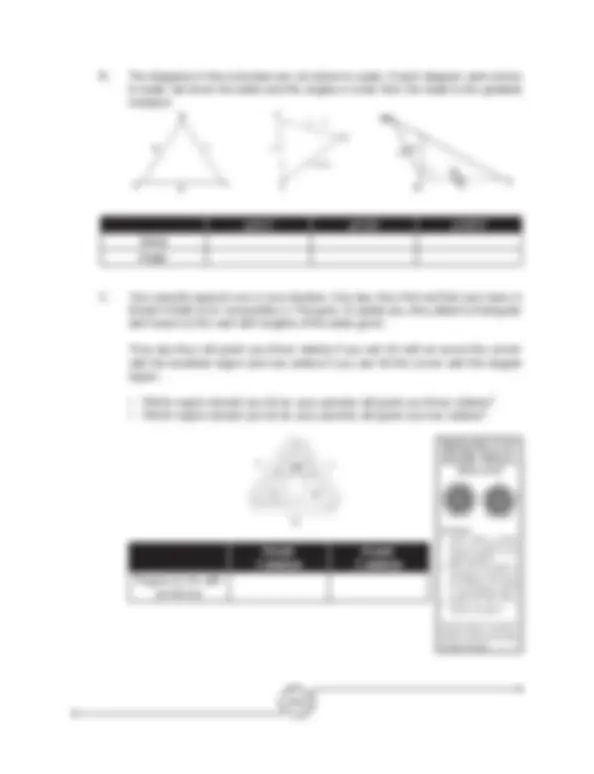
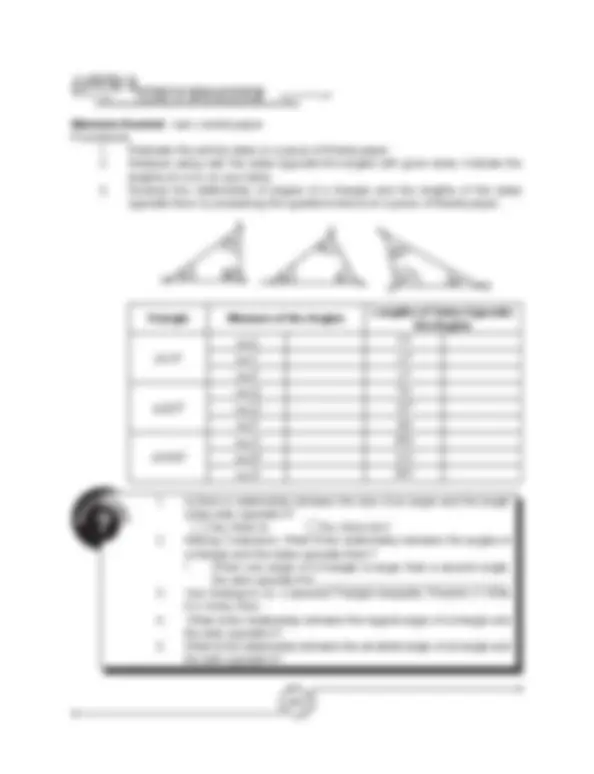
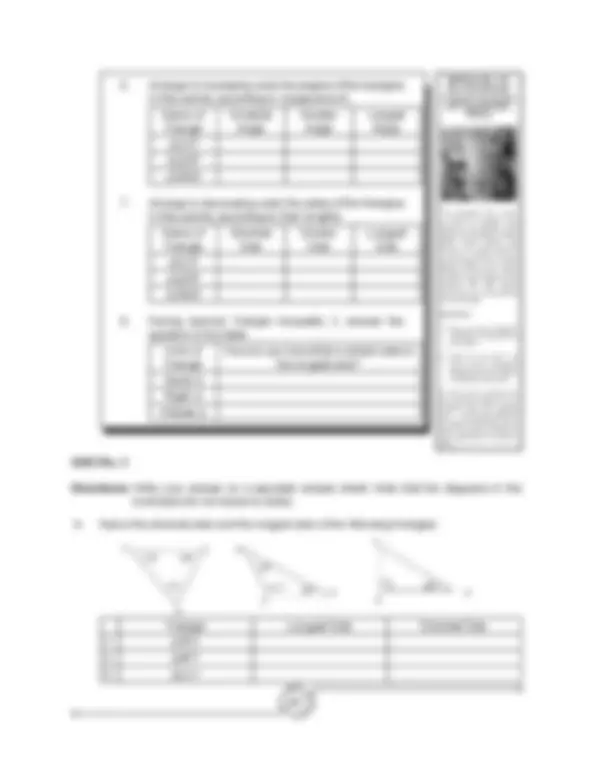
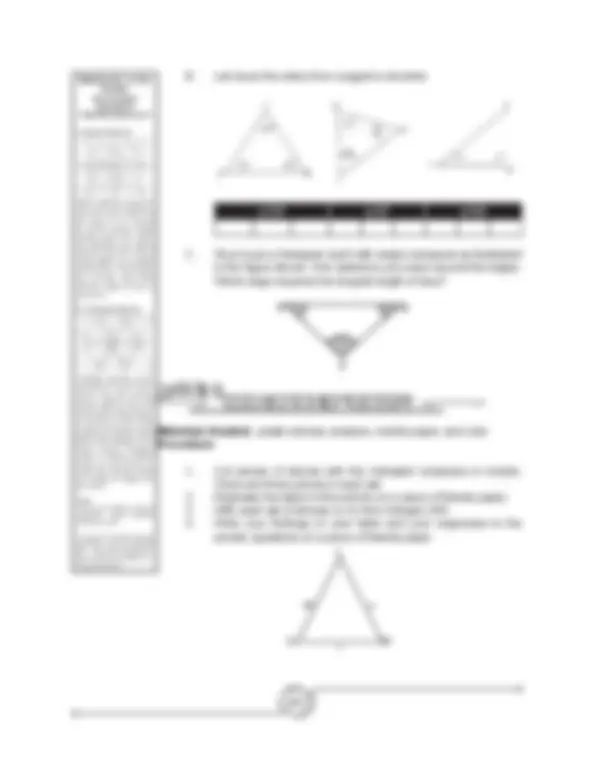
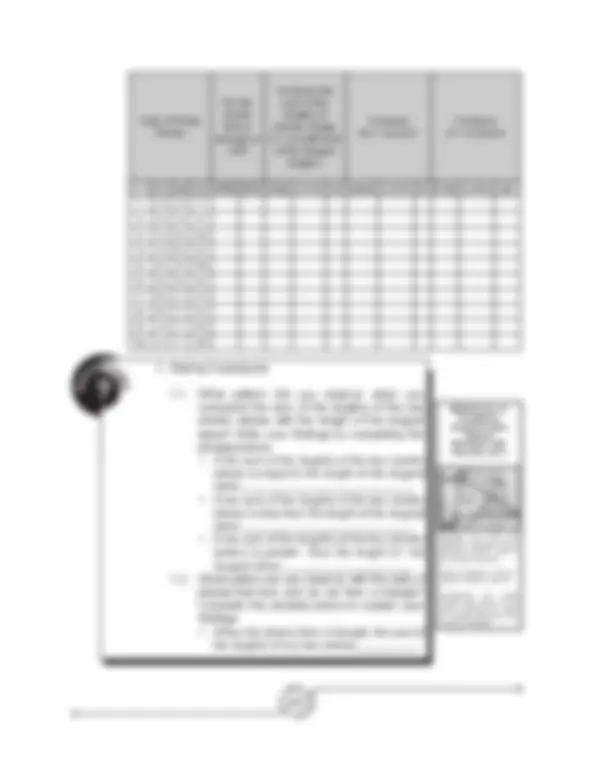
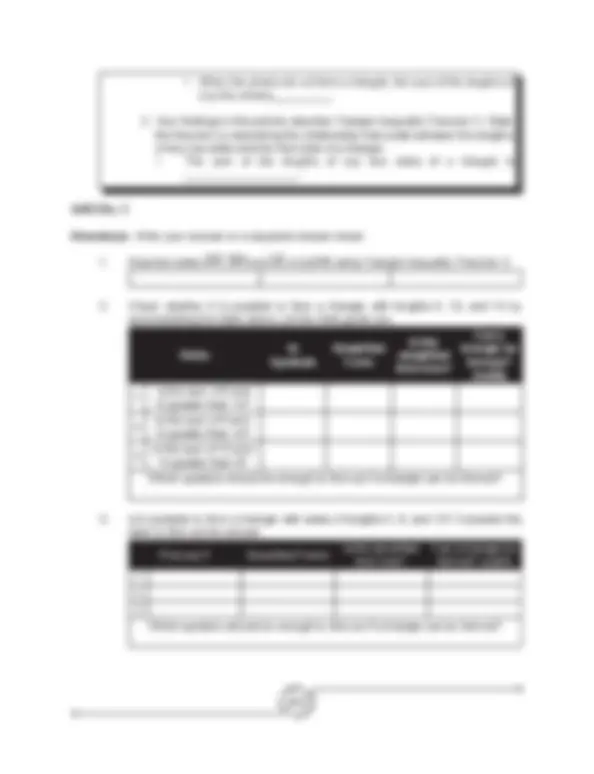
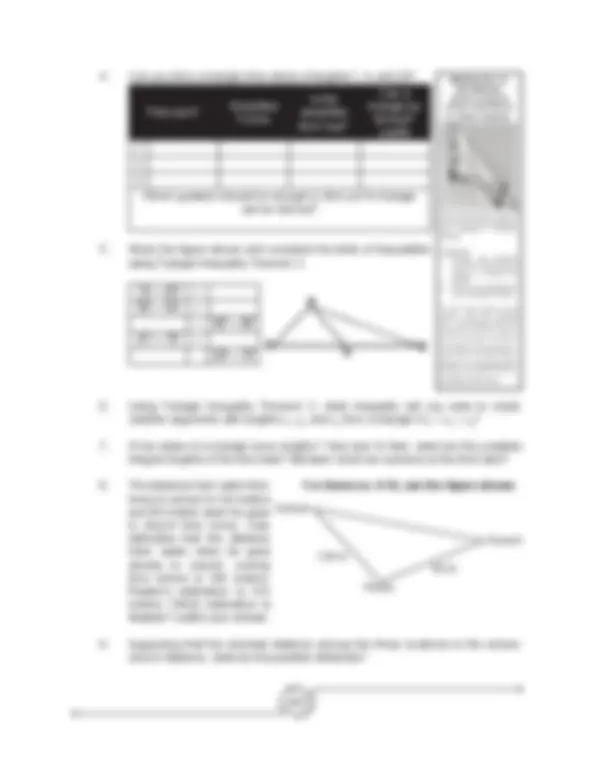
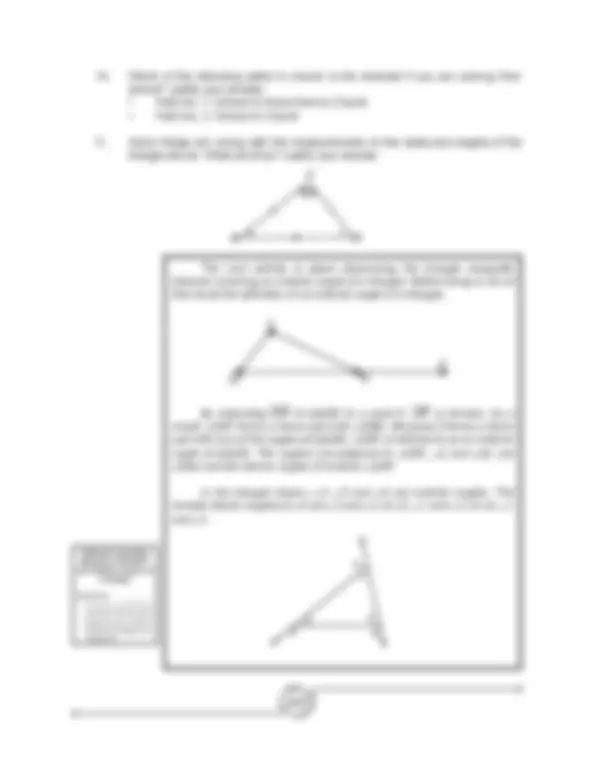
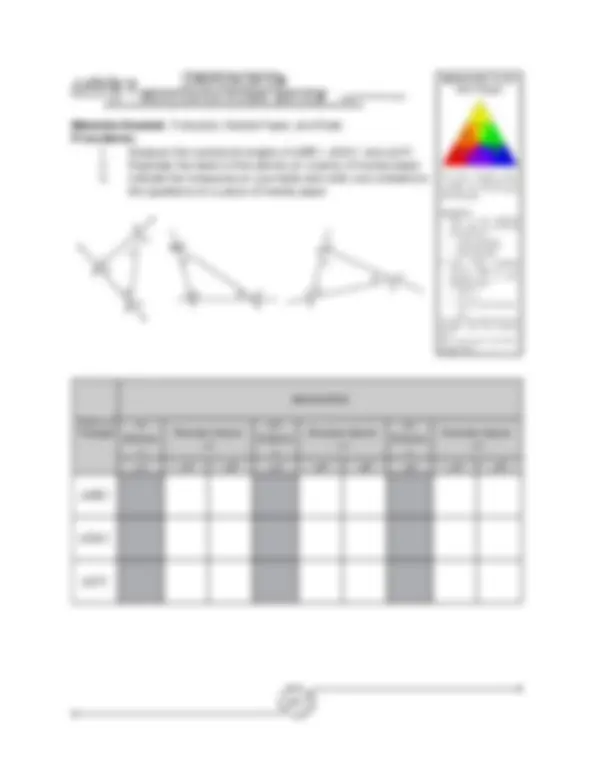
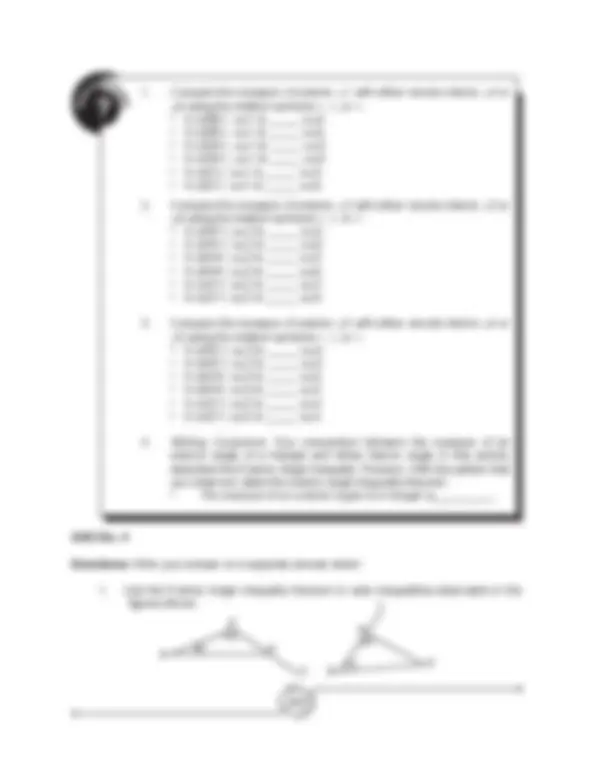
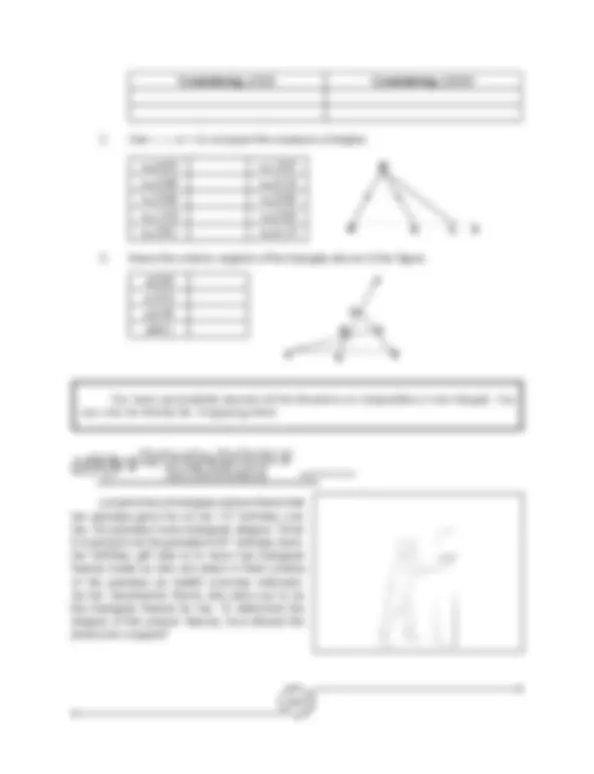
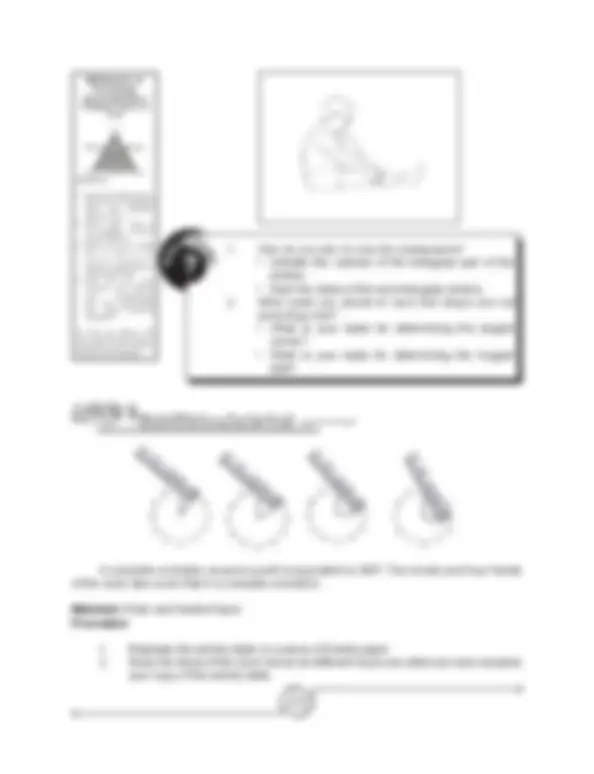
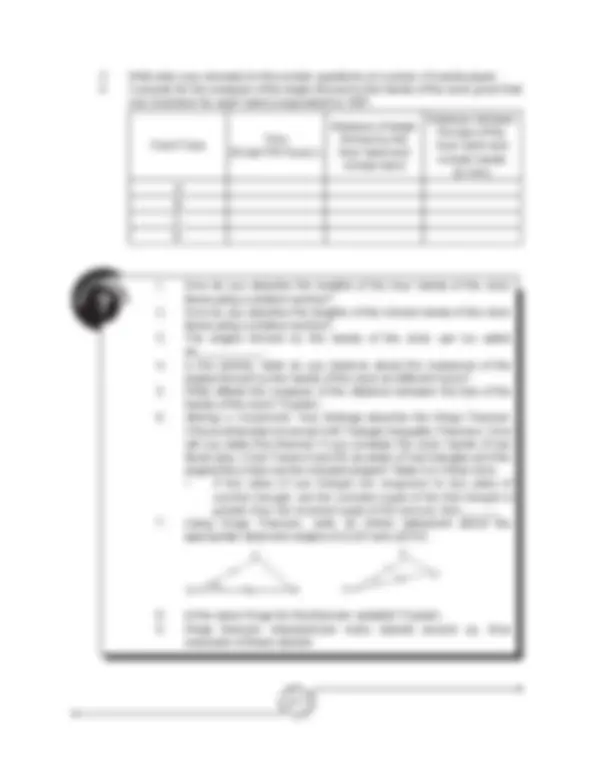
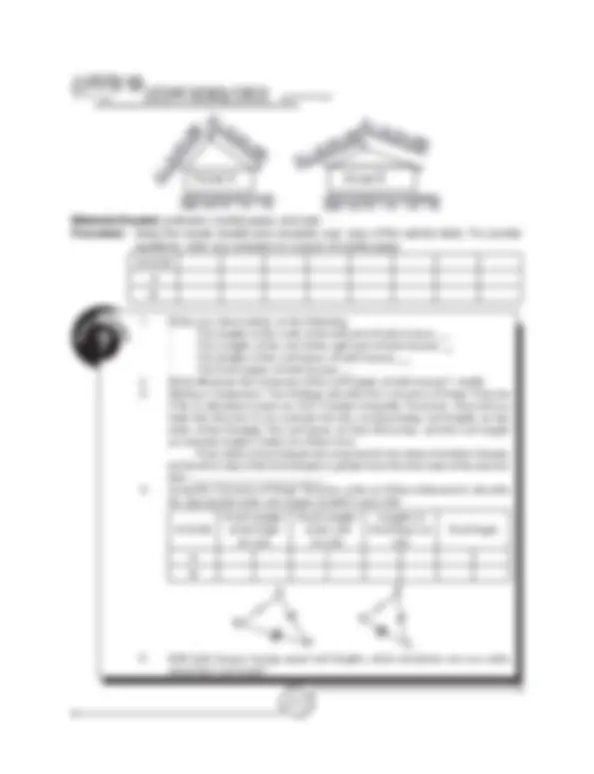
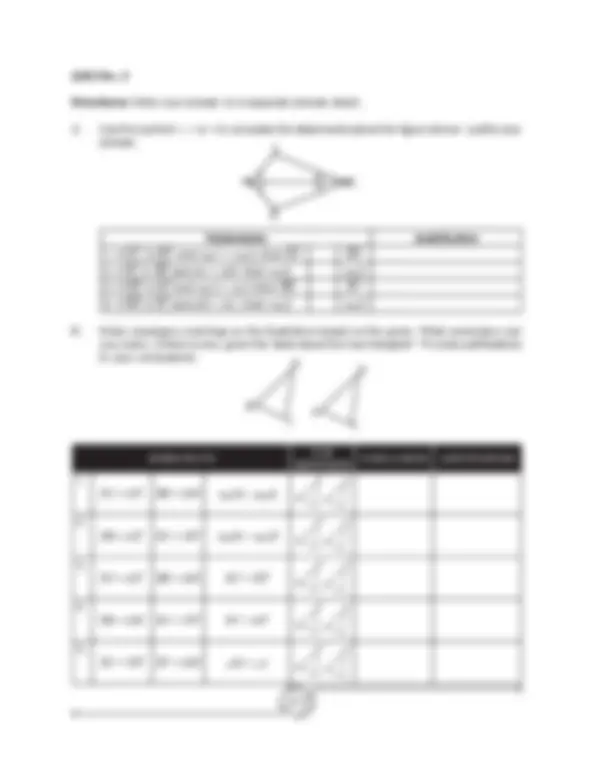
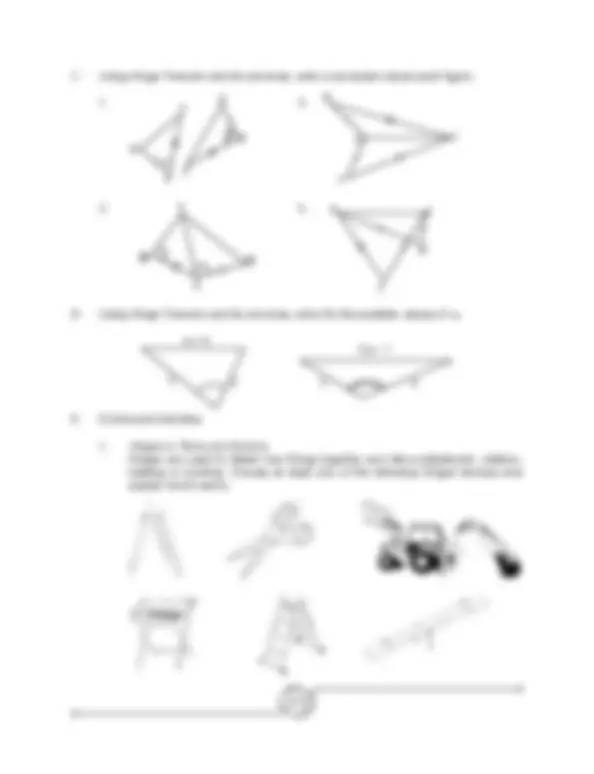
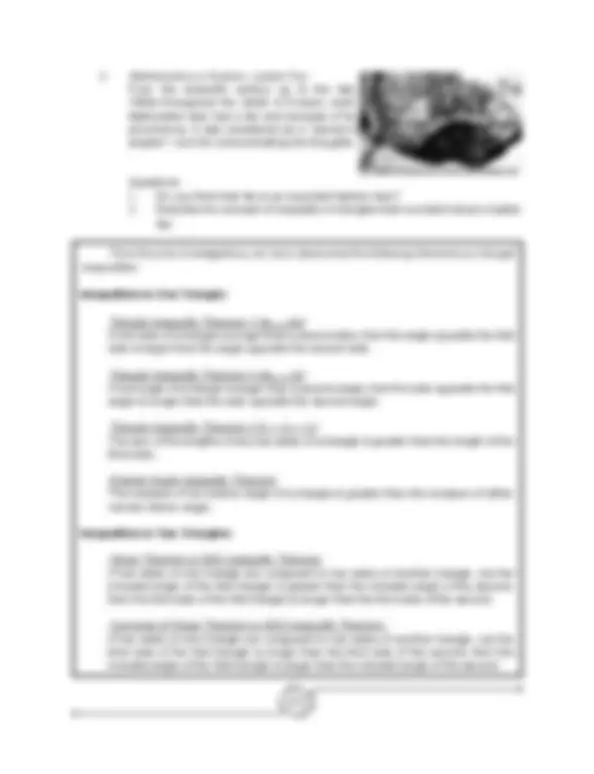
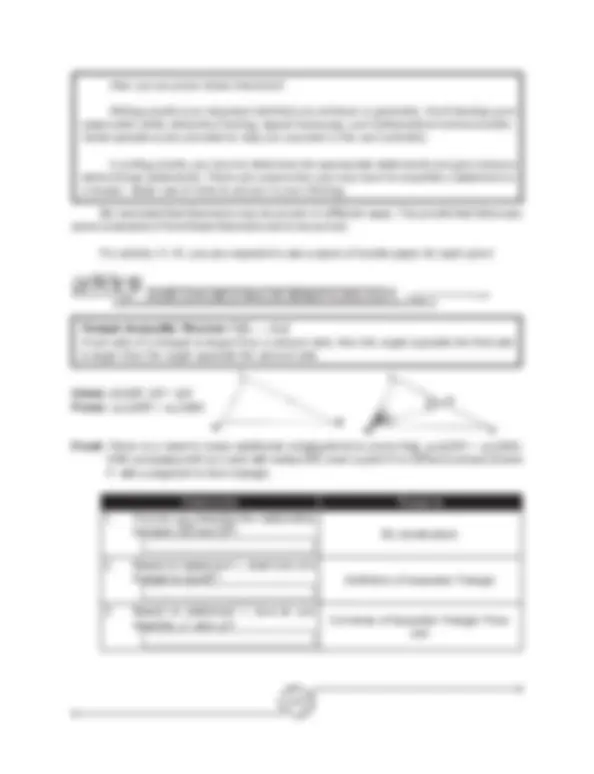
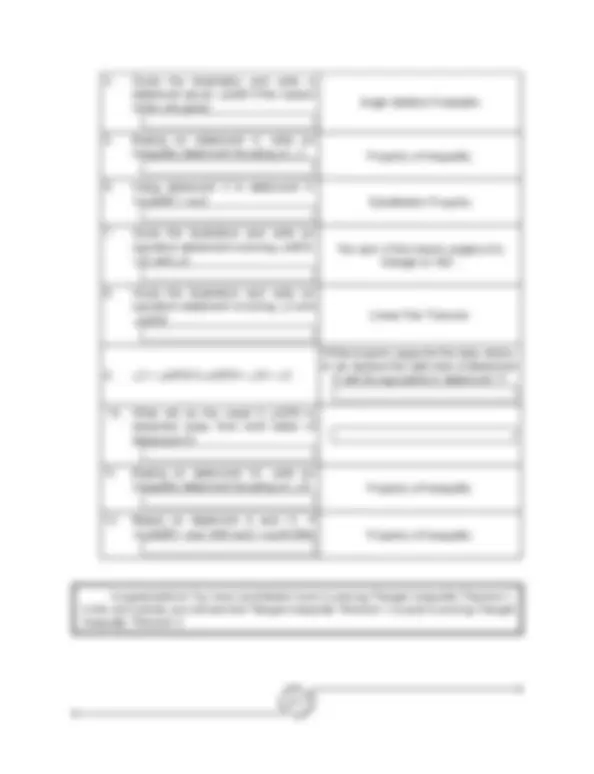
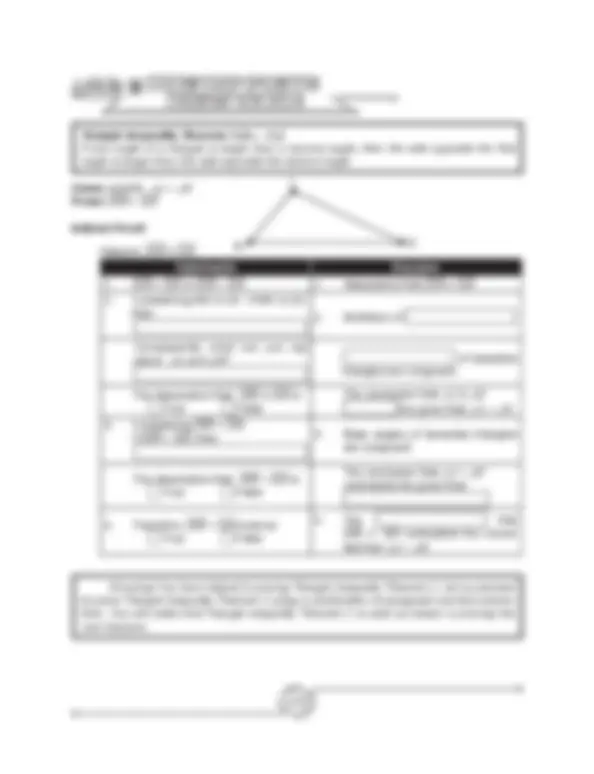
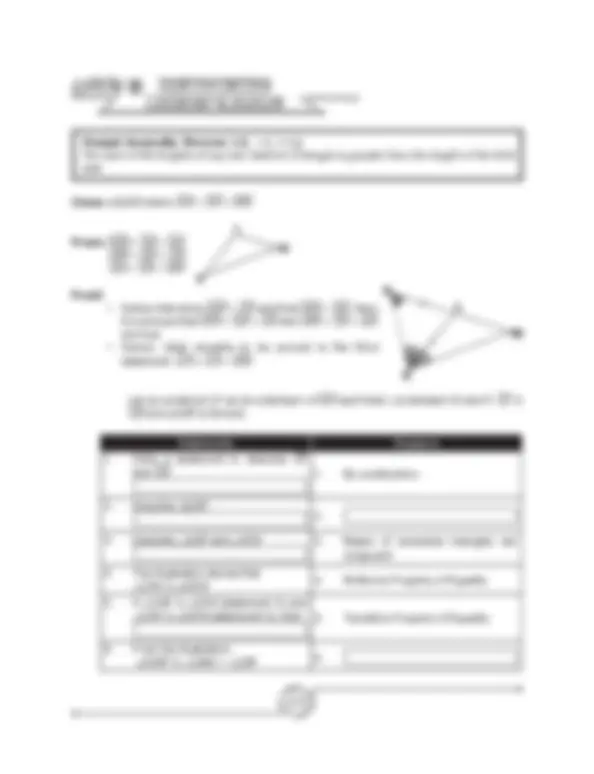
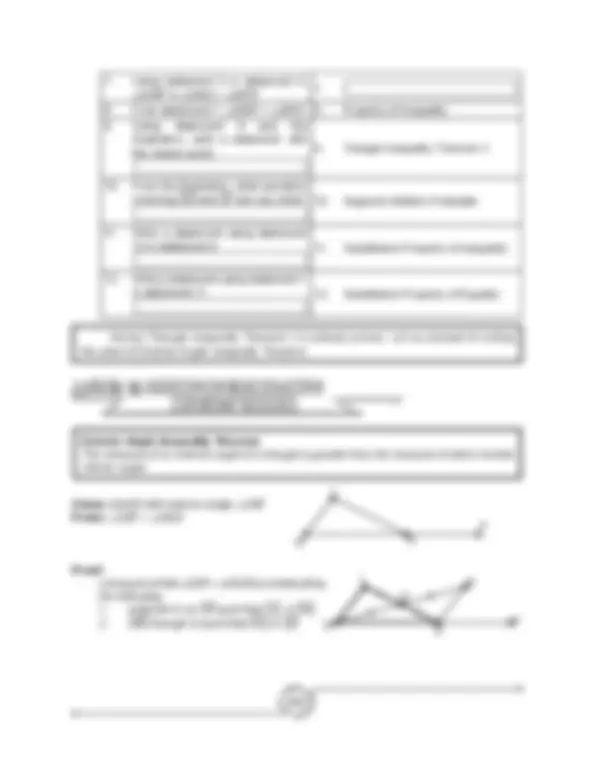
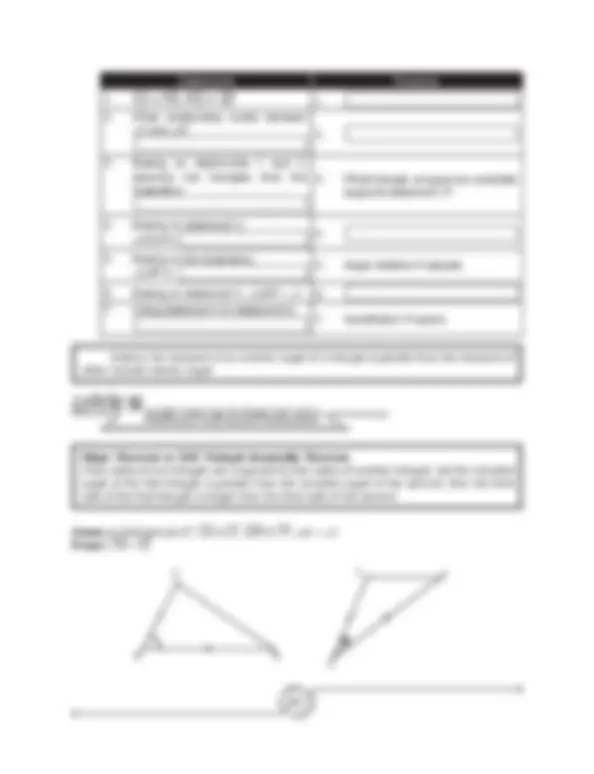
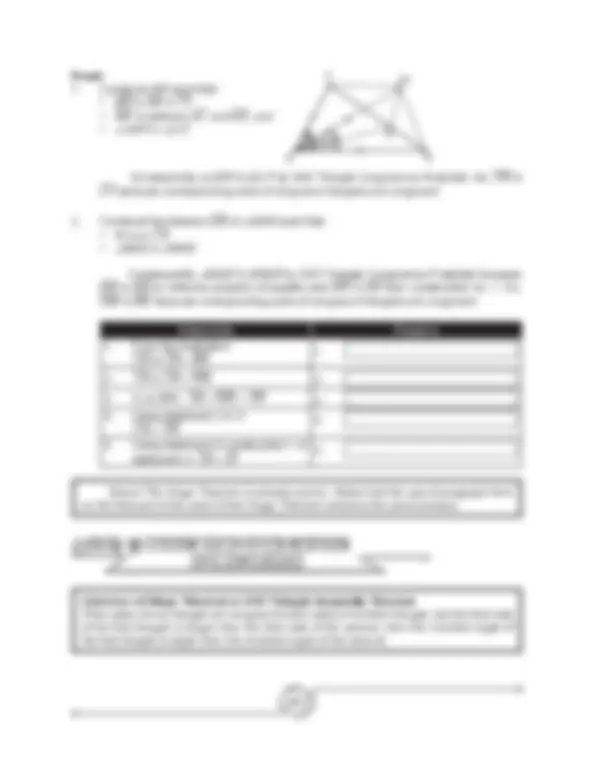
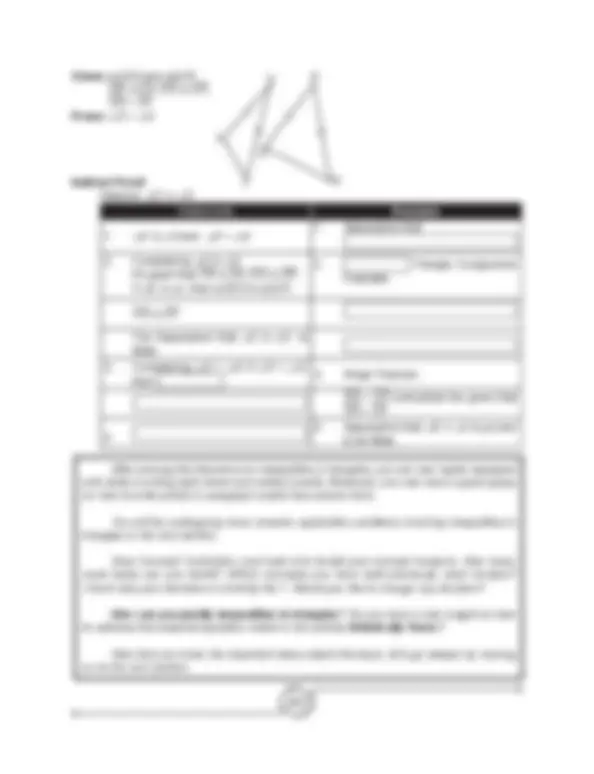
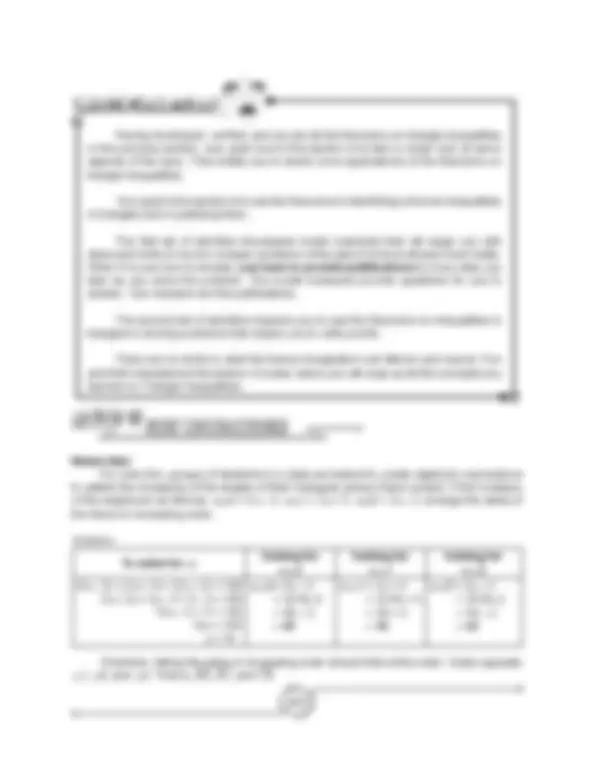
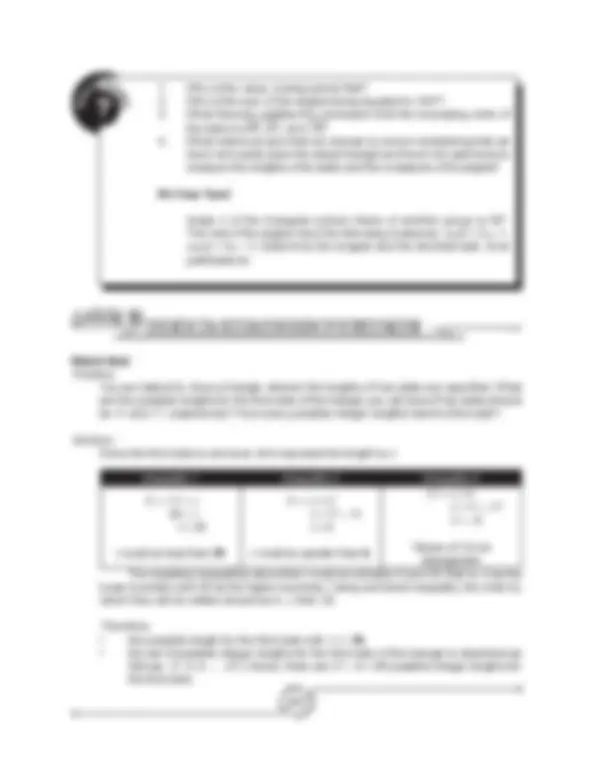
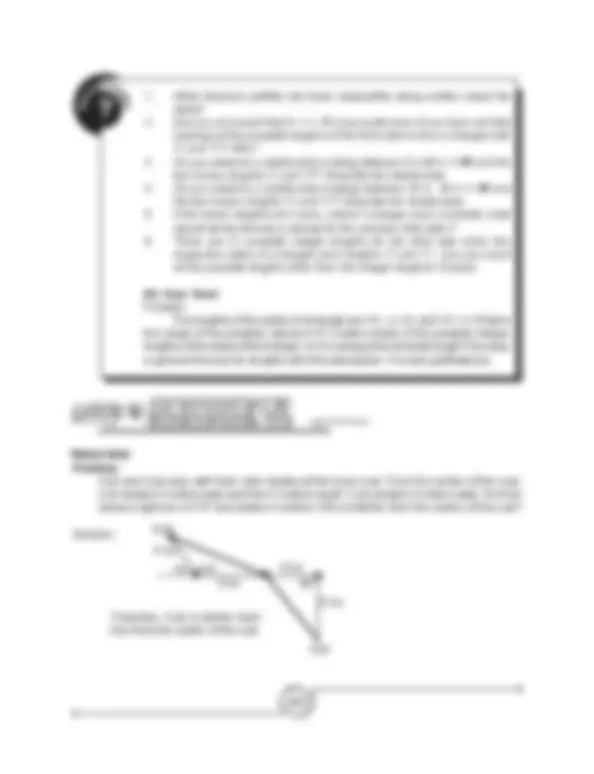
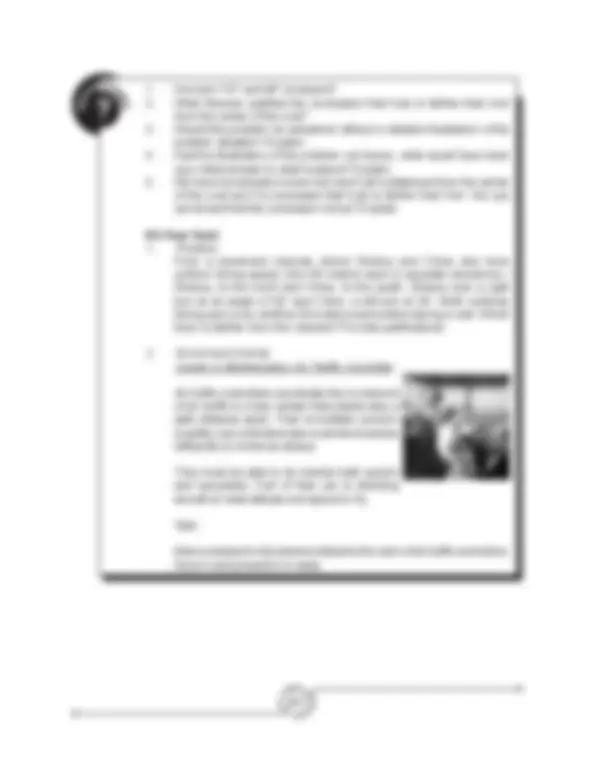
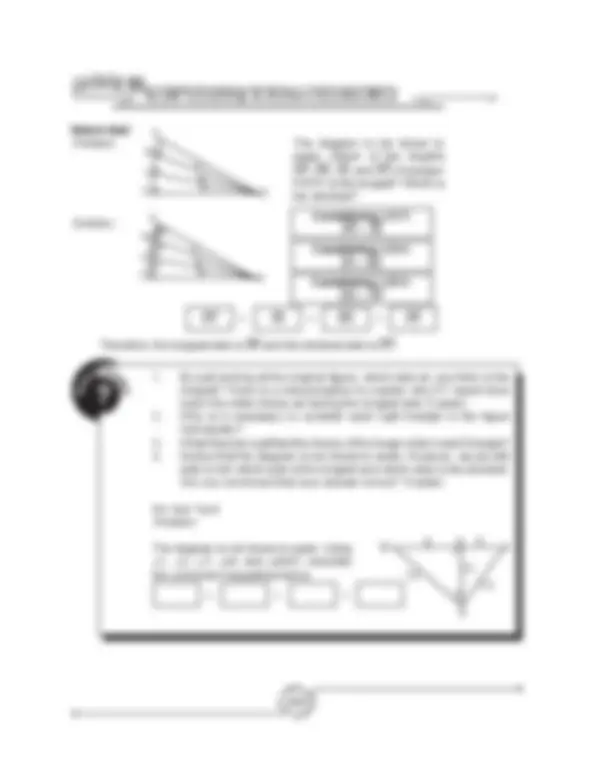
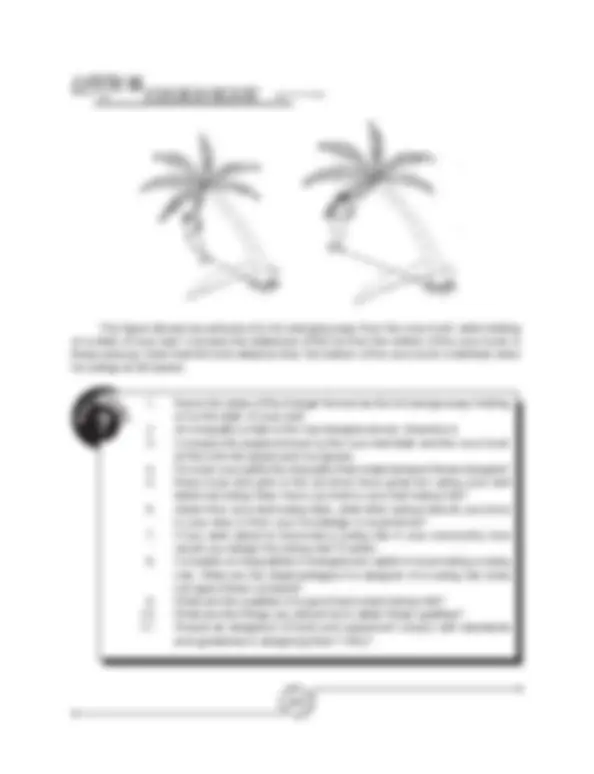
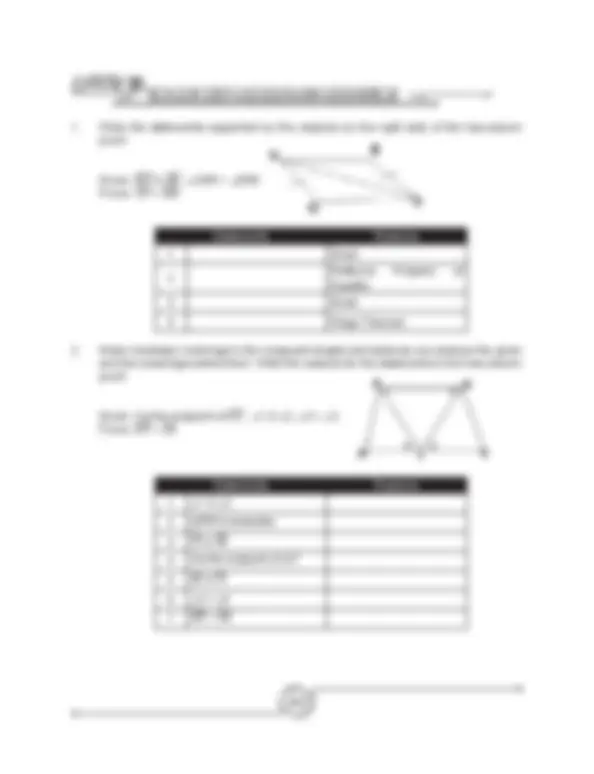
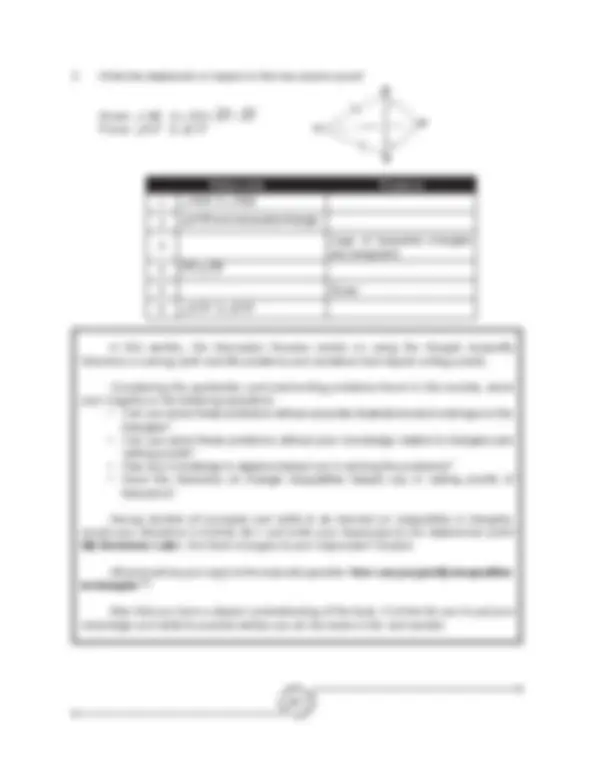
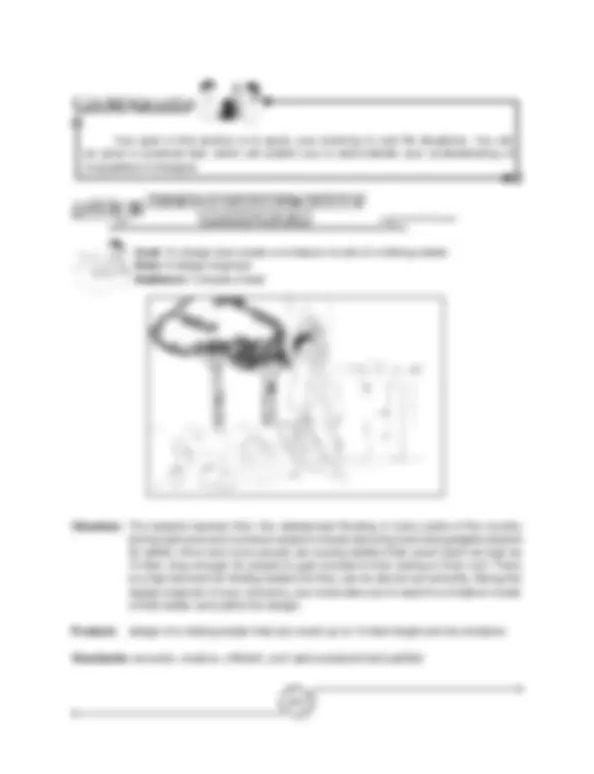
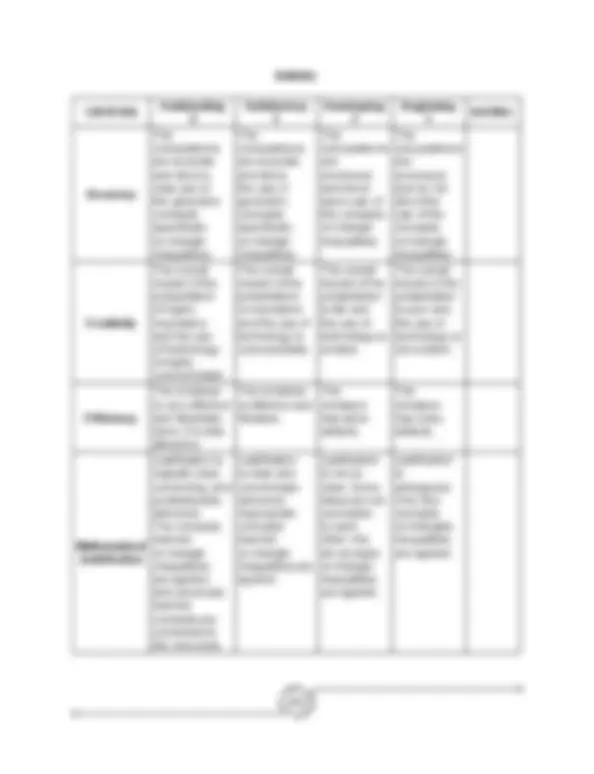
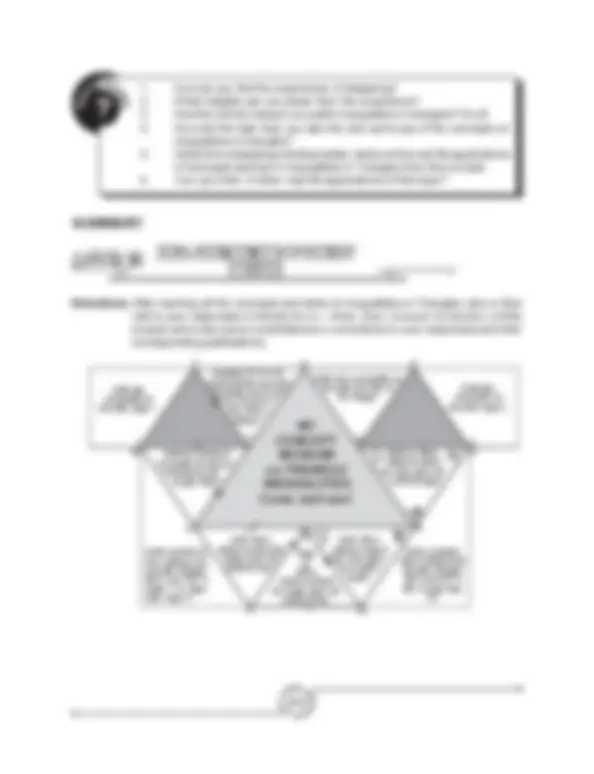
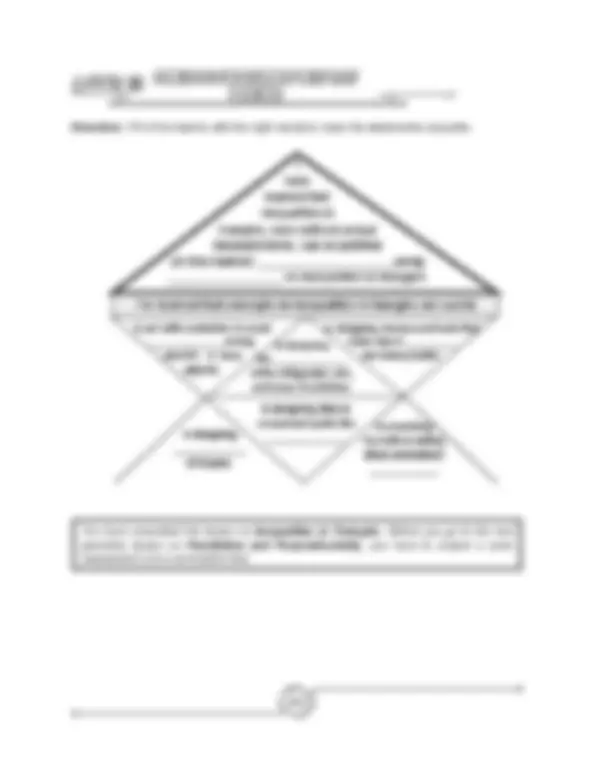
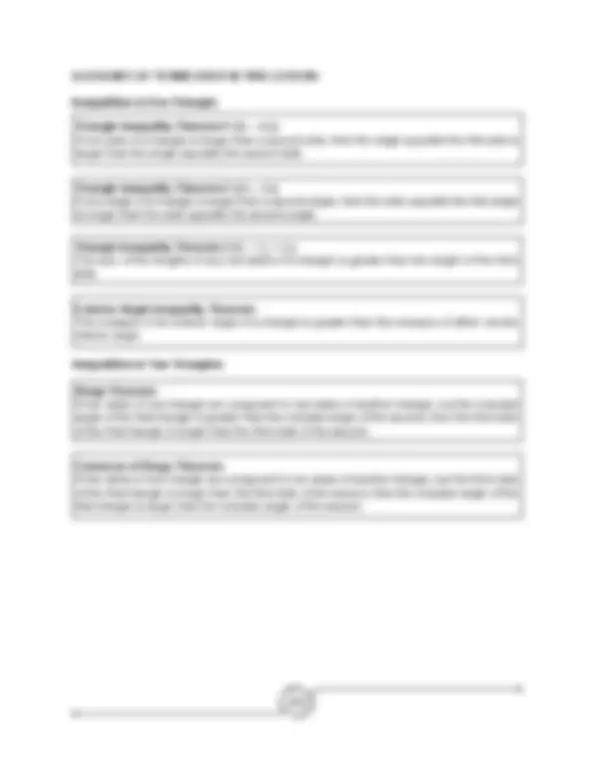
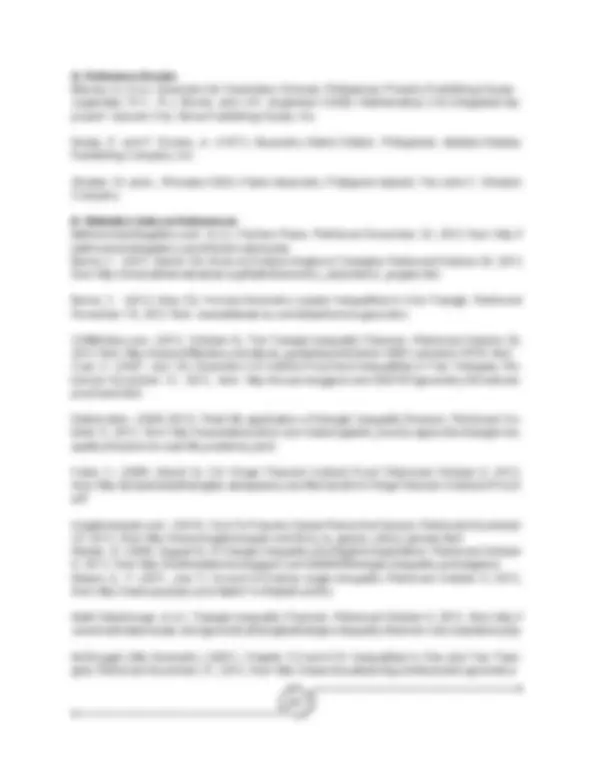
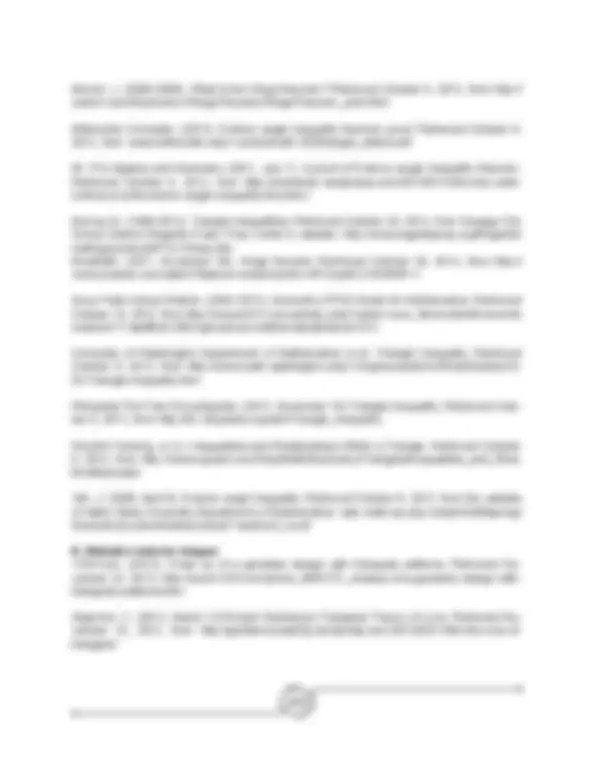
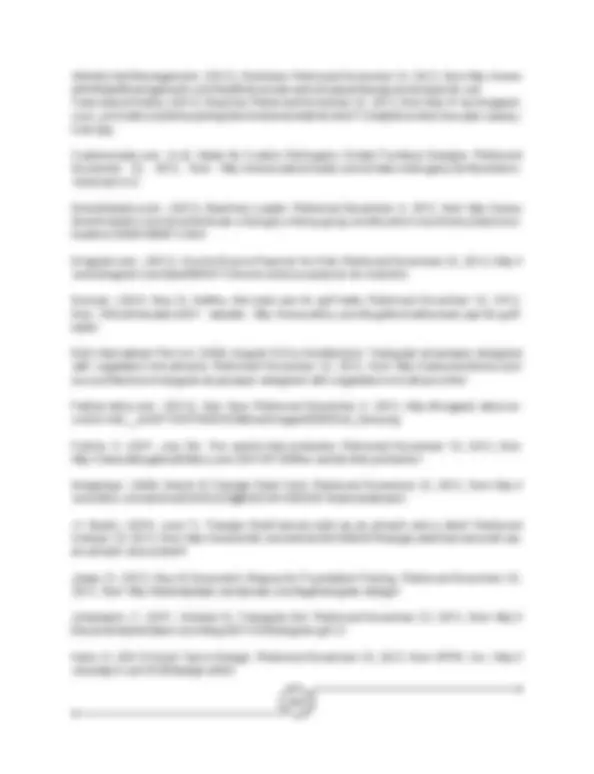
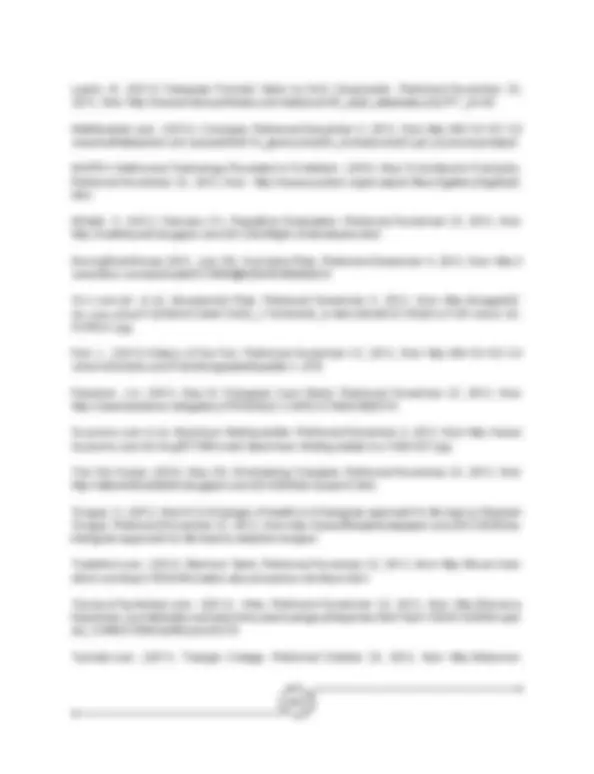
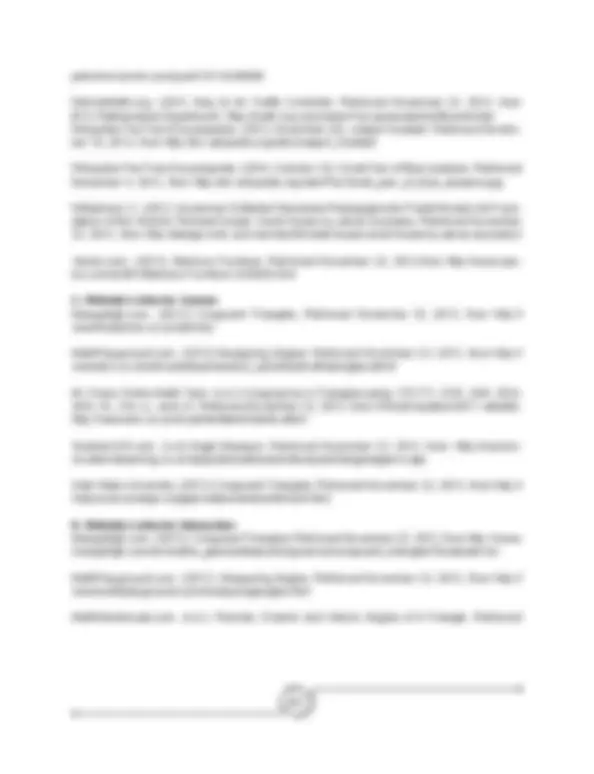
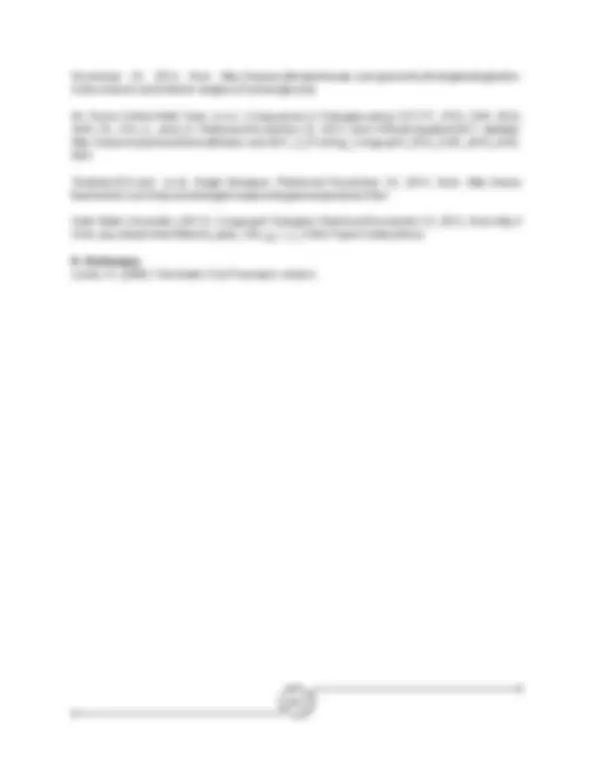


Study with the several resources on Docsity

Earn points by helping other students or get them with a premium plan


Prepare for your exams
Study with the several resources on Docsity

Earn points to download
Earn points by helping other students or get them with a premium plan
Community
Ask the community for help and clear up your study doubts
Discover the best universities in your country according to Docsity users
Free resources
Download our free guides on studying techniques, anxiety management strategies, and thesis advice from Docsity tutors
The answers to these queries are unveiled in this module. The concepts and skills you will learn from this lesson on the axiomatic development of triangle ...
Typology: Study notes
1 / 62

This page cannot be seen from the preview
Don't miss anything!























































Have you ever wondered how artists utilize triangles in their artworks? Have you ever asked yourself how contractors, architects, and engineers make use of triangular features in their designs? What mathematical concepts justify all the triangular intricacies of their designs? The answers to these queries are unveiled in this module.
The concepts and skills you will learn from this lesson on the axiomatic development of triangle inequalities will improve your attention to details, shape your deductive thinking, hone your reasoning skills and polish your mathematical communication. In short, this module unleashes that mind power that you never thought you ever had before!
Remember to find out the answers to this essential question: “How can you justify inequalities in triangles?”
In this module, you will examine this question when you take the following lessons:
Lesson 1 – Inequalities in Triangles
1.1 Inequalities among Sides and among Angles of a Triangle 1.2 Theorems on Triangle Inequality 1.3 Applications of the Theorems on Triangle Inequality
INEQUALITIES IN
TRIANGLES
In these lessons, you will learn to: Lesson 1 • state and illustrate the theorems on triangle inequalities such as exterior angle inequality theorem, triangle inequality theorem, hinge theorem.
Module MapModule Map
Inequalities in Triangle
Inequalities in One Triangle
Inequalities in Two Triangles
Triangle Inequality Theorem 1(Ss → Aa)
Triangle Inequality Theorem 1(Aa → Ss)
Triangle Inequality Theorem 3(S 1 +S 2 >S 3 )
Exterior Angle Inequality Theorem
Hinge Theorem
Converse of Hinge Theorem
a. HM ≅ HM c. HO ≅ HE b. m ∠ OHM > m ∠ EHM d. m ∠ EHM > m ∠ OHM
a. Ruel c. It cannot be determined. b. Oliver d. Ruel is as far as Oliver from the rendezvous.
a.
b.
c.
d.
a. The angles of the swings remain constant whether the speed is low or full. b. The angles of the swings are smaller at full speed than at low speed. c. The angles of the swings are larger at full speed than at low speed. d. The angles of the swings are larger at low speed than at full speed.
a. Yes, I will. b. No, I won’t. c. It is impossible to decide. d. It depends on which statement is left out.
a. GO c. DG b. DO d. GD
a.
b.
c.
d.
F E^ M
A
36 o 42 o
86 o
49 o G
q
r
t
s
59 o
59 o
60 o 61 o
p < q < r < s < t
s < p < q < r < t
t < r < s < q < p
q < p < t < r < s
I. Triangle Inequality Theorem 1 II. Triangle Inequality Theorem 2 III. Triangle Inequality Theorem 3 IV. Hinge Theorem V. Converse of Hinge Theorem
a. I, II, and III b. IV only c. IV and V d. V only
I. Roof costs for the larger lot is higher than that of the smaller lot. II. The roof of the smaller house is steeper than the larger house.
a. I only c. neither I nor II b. II only d. I and II
I. Kinds of materials to use considering the climate in the area II. Height of floor-to-ceiling corner rooms and its occupants III. Extra budget needed for top-of-the-line furnishings IV. Architectural design that matches the available funds V. Length of time it takes to finish the project
a. I, II, and IV c. I, II, IV, and V b. I, IV, and V d. I, II, III, IV, V
I. A roof also serving as wall contributes to more heat in the house. II. Placement of the windows and doors requires careful thinking. III. Some rooms of the house would have unsafe low ceiling. IV. An A-Frame design is an unusually artful design.
a. I and III c. I, II, and III b. II and IV d. I, II, III, IV
A. The design is customary. B. An artful house is a status symbol. C. The cost of building is reasonably low. D. The snow glides easily on steep roofs.
What to KnowWhat to Know
Let’s start the module by doing three activities that will reveal your background knowledge on triangle inequalities.
A ctivity^1
Directions:
Statement My Decision Now
1 To form a triangle, any lengths of the sides can be used. 2 The measure of the exterior angle of a triangle can be greater than the measure of its two remote interior angles. 3 Straws with lengths 3 inches, 4 inches and 8 inches can form a triangle. 4 Three segments can form a triangle if the length of the longest segment is greater than the difference but less than the sum of the two shorter segments. 5 If you want to find for the longest side of a triangle, look for the side opposite the largest angle.
Statement My Decision Later
1 To form a triangle, any lengths of the sides can be used. 2 The measure of the exterior angle of a triangle can be greater than the measure of its two remote interior angles. 3 Straws with lengths 3 inches, 4 inches and 8 inches can form a triangle. 4 Three segments can form a triangle if the length of the longest segment is greater than the difference but less than the sum of the two shorter segments. 5 If you want to find for the longest side of a triangle, look for the side opposite the largest angle.
Note that the triangles in this concept museum are not drawn to scale and all sides can be named using their endpoints. Consider using numbers to name the angles of these triangles.
Notice that markings are shown to show which angles are larger and which sides are longer. These markings serve as your hints and clues. Your responses to the tasks must be justified by naming all the theorems that helped you decide what to do.
How many tasks of the concept museum can you tackle now?
Replicate two (2) copies of the unfilled concept museum. Use the first one for your responses to the tasks and the second one for your justifications.
Write two Inequalities to describe angle 1.
Write a detailed if- then statement to describe triangles MXK and KBF if angle X is larger than angle B
Write a detailed if-then statement to describe triangles MXK and KBF if MK is longer than KF.
Write an if-then statement about the angles given the marked sides.
Write the combined inequality you will use to determine the length of MK?
Write if-then statement about the angles given the marked sides.
Write if-then statement about the sides given the marked angles.
Write two Inequalities to describe angle 2.
Write an if-then statement about the sides given the marked angles
5
Knowing TH>TX>HX, what question involving inequality should you use to check if they form a triangle?
Write three inequalities to describe the sides of this triangle
1 3 4
2 C
N
H^ E
X
T
M
K
F
B
W
6 7
on TRIANGLE INEQUALITIES Come visit now!
R
5
1 3 4
2 C
N
H E
X
T
M
K
F
B
W
6 7
MY CONCEPT MUSEUM on TRIANGLE INEQUALITIES Come visit now!
R
1. Axioms of Equality 1.1 Reflexive Property of Equality - For all real numbers p , p = p. 1.2 Symmetric Property of Equality - For all real numbers p and q , if p = q , then q = p. 1.3 Transitive Property of Equality - For all real numbers p , q , and r , if p = q and q = r , then p = r. 1.4 Substitution Property of Equality - For all real numbers p and q , if p = q , then q can be substituted for p in any expression.
Are you excited to completely build your concept museum, Dear Concept Contractor? The only way to do that is by doing all the succeeding activities in the next section of this module. The next section will also help you answer this essential question raised in the activity Artistically Yours: How can you justify inequalities in triangles? The next lesson will also enable you to do the final project that is inspired by the artworks shown in Artistically Yours. When you have already learned all the concepts and skills related to inequalities in triangles, you will be required to make a model of a folding ladder and justify the triangular features of its design. Your design and its justification will be rated according to these rubrics: accuracy, creativity, efficiency, and mathematical justification.
What to ProcessWhat to Process
Your first goal in this section is to develop and verify the theorems on inequalities in triangles. To succeed, you need to perform all the activities that require investigation.
When you make mathematical generalizations from your observations, you are actually making conjectures just like what mathematicians do. Hence, consider yourself little mathematicians as you perform the activities.
Once you have developed these theorems, your third goal is to prove these theorems. You have to provide statements and/or reasons behind statements used to deductively prove the theorems.
The competence you gain in writing proofs enables you to justify inequalities in triangles and in triangular features evident in the things around us.
Before you go through the process, take a few minutes to review and master again the knowledge and skills learned in previous geometry lessons. The concepts and skills on the following topics will help you succeed in the investigatory and proof-writing activities.
To measure an angle, the protractor’s origin is placed over the vertex of an angle and the base line along the left or right side of the angle. The illustrations below show how the angles of a triangle are measured using a protractor.
(^0180)
(^20160)
(^30150)
(^40140)
5013060120
(^7011080100 ) 6050130 40140 30150 20160 10 10170 (^17032) o 0180
1800 16020 15030 (^14040) (^13050) (^12060) (^11070) 9010080 (^16015030 )
(^1701020)
17010
1800
108 o
(^0180)
(^20160)
(^30150)
(^40140)
5013060120
(^7011080100 ) 6050130 40140 30150 20160 10 10170 (^17040) o 0180
Mathematical History Who invented the first advanced protractor?
Capt. Joseph Huddart (1741-1816) of the United States Navy invented the first advanced protractor in 1801. It was a three- arm protractor and was used for navigating and determining the location of a ship
~Brian Brown of www. ehow.com~ To read more about the history of protractor, visit these website links:
Internet Learning Mastering the Triangle Congruence Postulates Video • http://www.onlinemathlearn- ing.com/geometry-congru ent-triangles.html - Interactive • http://www.mrperezonlin emathtutor.com/G/1_5_Prov ing_Congruent_SSS_SAS_-
6.1 Definition of Congruent Triangles: Corresponding parts of congruent triangles are congruent (CPCTC). 6.2 Included Angle
6.3 Included Side
The last property of inequality is used in geometry such as follows:
Q is between P and R.
PR ≅ PQ + QR Then PR > PQ and PR > QR.
∠ 1 and ∠ 2 are adjacent angles.
Then m ∠ PQR > m ∠1 and m ∠ PQR > m ∠ 2
The following steps have to be observed in writing proofs:
marking congruent or unequal angles or sides, marking perpendicular, parallel or intersecting lines or indicating measures of angles and/or sides
The markings and the measures guide you on how to proceed with the proof they also direct you whether your plan for proof requires you to make additional constructions in the figure.
Greatest Possible Error (GPE) One half of the measuring unit used is the greatest possible error. For example, you measure a length to be 5.3 cm. This measurement is to the nearest tenth. Hence, the GPE should be one half of 0.1 which is equal to 0.05. This means that your measurement may have an error of 0.05 cm, that is, it could be 0.05 longer or shorter.
Tolerance Intervals Tolerance interval (margin of error) may represent error in measurement. This interval is a range of measurements that will be tolerated or accepted before they are considered flawed.
Supposing that a teacher measures a certain angle x as 36 degrees. The measurement is to the nearest degree, that is, 1. The GPE is one half of 1, that is, 0.5. Your answer should be within this range: 36-0.5 ≤ x ≤ 36 + 0.5. Therefore, the tolerance interval or margin of error is 35.5≤ x ≤36.5 or 35.5 to 36.5.
Now that you have already reviewed concepts and skills previously learned that are useful in this module, let us proceed to the main focus of this section—develop, verify, and prove the theorems on inequalities in triangles.
A ctivity^4
Materials Needed: protractor, manila paper, ruler Procedures:
Triangle Length of Sides
Measures of Angles Opposite the Sides
FN 3.5 (^) m ∠ U
NU 4.5 (^) m ∠ F
TP (^5) m ∠ Y
PY 6 m ∠ T
RY (^5) m ∠ T
TY (^10) m ∠ R
B. The diagrams in the exercises are not drawn to scale. If each diagram were drawn to scale, list down the sides and the angles in order from the least to the greatest measure.
Sides Angle
C. Your parents support you in your studies. One day, they find out that your topic in Grade 8 Math is on Inequalities in Triangles. To assist you, they attach a triangular dart board on the wall with lengths of the sides given.
They say they will grant you three wishes if you can hit with an arrow the corner with the smallest region and two wishes if you can hit the corner with the largest region.
Grant: 3 wishes
Grant: 2 wishes Region to Hit with an Arrow
Mathematics in Art Geometric Shapes for Foundation Piecing by Dianna Jesse
Challenge:
A ctivity^5
Materials Needed: ruler, manila paper Procedures:
Triangle Measure of the Angles Lengths of Sides Opposite the Angles
m ∠ L FY m ∠ Y LF m ∠ F LY
m ∠ Q TU m ∠ U QT m ∠ T QU
m ∠ O MG m ∠ M GO m ∠ G MO
U
?
36 o^38 o^61 o
81 o 48 o
103 o^29 o
L Q (^) O
T U G M Y (^) F
54 o
90 o